Click on images to enlarge

habit (Photo: Sheldon Navie)

habit in flower (Photo: Sheldon Navie)

habit of older plant in flower (Photo: Sheldon Navie)
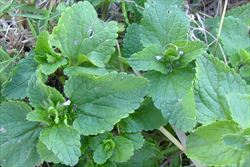
paired leaves with bluntly toothed margins (Photo: Sheldon Navie)
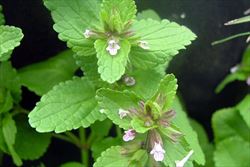
small flowers clustered in the upper leaf forks (Photo: Sheldon Navie)
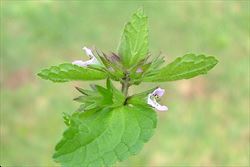
close-up of almost stalkless upper leaves, greenish sepals, and flowers from side-on (Photo: Sheldon Navie)

close-up of pinkish tubular flowers with purplish sepals (Photo: Greg Jordan)
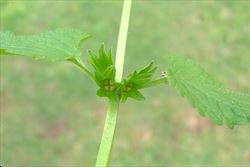
close-up of four-angled stem and immature fruit (Photo: Sheldon Navie)

close-up of mature fruit inside the enlarged persistent sepals (Photo: Sheldon Navie)

seedling (Photo: Sheldon Navie)
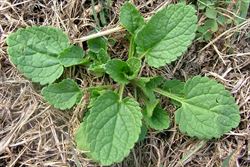
young plant with longer leaf stalks (Photo: Sheldon Navie)
Scientific Name
Stachys arvensis (L.) L.
Synonyms
Glechoma arvensis L.
Family
Labiatae (South Australia)Lamiaceae (Queensland, New South Wales, the ACT, Victoria, Tasmania, Western Australia and the Northern Territory)
Common Names
annual hedgenettle, field woundwort, fieldnettle betony, hedge-nettle, stagger weed, staggerweed
Origin
Native to northern Africa, the Azores, the Madeira Islands, the Canary Islands, western and southern Europe, the middle-east and western Asia.
Naturalised Distribution
Widely naturalised in southern and eastern Australia. It is widespread in Queensland, New South Wales, Victoria and Tasmania, and is most common in the wetter parts of these states. In addition, it is naturalised in many parts of South Australia and in south-western Western Australia. Also naturalised on Lord Howe Island and Norfolk Island.
Widely naturalised elsewhere in the world, including in some parts of North America, in New Zealand, and on some Pacific islands (e.g. the Galápagos Islands, New Caledonia, Tonga and Hawaii).
Notes
While stagger weed (Stachys arvensis) is primarily a weed of cultivation and disturbed sites, it is sometimes also regarded as an environmental weed in New South Wales, Victoria and Western Australia.

